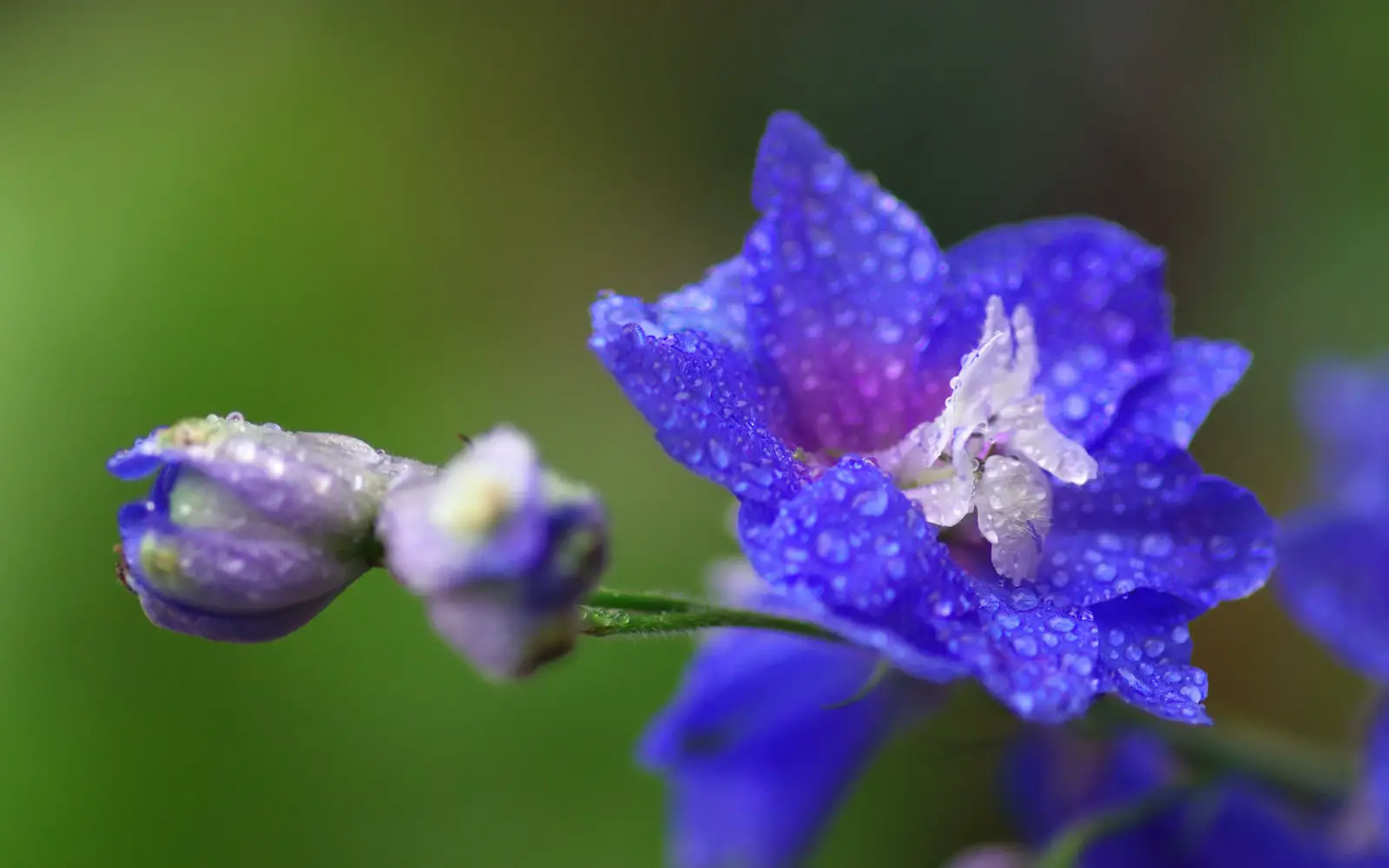Delphiniums, with their striking spires of vividly colored flowers, are a favorite among gardeners and landscape designers. Towering above other garden plants, they bring dramatic vertical lines and color to flower beds, often reaching up to 6 feet in height. Known for their bold blues but also found in shades of purple, pink, white, and yellow, Delphiniums are a signature of early summer gardens.
Part of the Ranunculaceae family, Delphiniums are also commonly referred to as Larkspur, although this can be misleading as the true Larkspur is a closely related annual species. Native to the Northern Hemisphere, Delphiniums are mainly found in Africa and the mountainous regions of tropical Africa. They have been cultivated for centuries, leading to many hybrid varieties that differ in color, shape, and size.
One of the unique features of Delphiniums is their intricate, dolphin-like flowers. The genus name “Delphinium” comes from the Latin word for dolphin, inspired by the shape of their closed flower buds. These alluring blooms are not only visually stunning but have also been symbolically linked to levity and joyful youth, making them a beloved choice for various occasions and landscapes.
| Attribute | Details |
|---|---|
| Common Names | Delphinium, Larkspur |
| Botanical Name | Delphinium |
| Family | Ranunculaceae |
| Plant Type | Perennial |
| Mature Size | 2-6 feet tall, 1-3 feet wide |
| Sun Exposure | Full sun |
| Soil Type | Well-drained, moderately fertile soil |
| Hardiness Zones | 3-7 |
| Native Area | Northern Hemisphere, mountainous regions of tropical Africa |
Delphiniums Care
Delphiniums are known for their elegance but also for their somewhat demanding care requirements. They need a sunny location with well-drained soil and consistent moisture, particularly during dry spells. Delphiniums are heavy feeders, and they require proper fertilization and regular deadheading to promote prolonged blooming.
Staking is often essential for Delphiniums, especially the taller varieties, as their hollow stems can be quite fragile. Providing adequate support helps them maintain their majestic stature without collapsing under wind or heavy rain. Careful monitoring for pests and diseases is also necessary, as they can be prone to certain problems like powdery mildew and slugs.
Light Requirement for Delphiniums
Delphiniums thrive in full sun and require at least six hours of direct sunlight daily to bloom vibrantly. Insufficient light may result in weak stems and poor flowering.
Soil Requirements for Delphiniums
These plants prefer well-drained, moderately fertile soil with a slightly alkaline pH level. Proper soil preparation with the addition of compost or other organic matter will encourage healthy growth.
Water Requirements for Delphiniums
Delphiniums need consistent watering, especially during dry periods. While they appreciate moisture, overwatering or waterlogged soil should be avoided, as this can lead to root rot.
Temperature and Humidity
Delphiniums are cold-hardy but can struggle in intense heat and humidity. In hot climates, providing afternoon shade and ensuring good air circulation can mitigate these challenges.
Fertilizer
Regular fertilization with a balanced, slow-release fertilizer supports the Delphinium’s growth. A bi-weekly application of liquid fertilizer during the growing season can further enhance flowering.
Pruning Delphiniums
Deadheading spent flowers encourages repeat blooming. Cutting back the flower stalks after the first flowering may result in a second, albeit smaller, bloom later in the season.
Propagating Delphiniums
Delphiniums can be propagated through division or cuttings. Division is best done in early spring or fall, while cuttings can be taken in late spring to early summer.
How To Grow Delphiniums From Seed
Growing Delphiniums from seed can be a rewarding challenge. Start indoors in late winter or early spring and transplant after the danger of frost has passed. Cold stratification may improve germination rates.
Common Pests & Plant Diseases
Slugs and Snails
These pests are attracted to Delphinium’s young foliage and can cause significant damage.
Powdery Mildew
This fungal disease affects the leaves, leading to white, powdery spots.
Common Problems With Delphiniums
Leggy Growth
Insufficient light or overcrowded planting can result in weak, elongated stems.
Root Rot
Overwatering or poor drainage can lead to this fungal problem, causing wilting and yellowing of the leaves.
Pro Tips
- Plant in full sun with good air circulation to prevent diseases.
- Stake taller varieties to provide adequate support.
- Regularly monitor for slugs and other pests.
- Consider growing shorter varieties if wind or heavy rain is a concern.
- Provide proper winter mulching in colder climates to protect the crowns.




